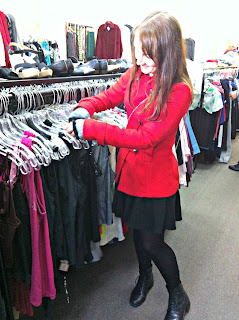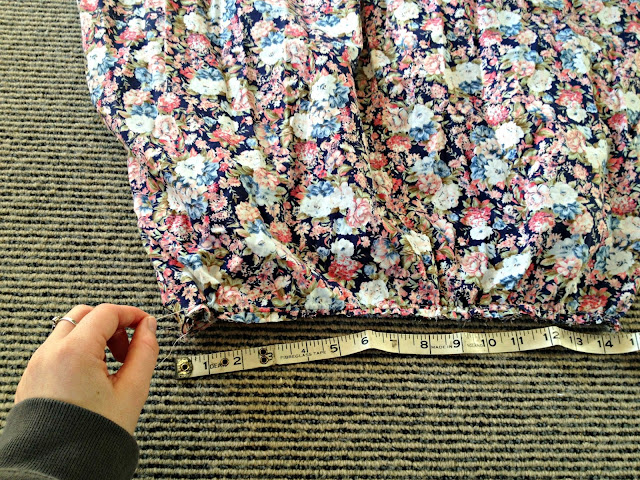Op-shopping, or thrifting, is ideal for students.
It's a super cheap way to stock up your wardrobe and source one-off pieces. But it isn't all about wearing your granddad's clothes and looking incredible as Macklemore would have you believe, unless you're into that, in which case we're sure you look amazing.
So we've come up with some op-shopping tips to help you thrift like a pro and come away feeling like a million dollars, even if you only have $20 in your pocket.
1) Be open minded
You can't go into an op-shop expecting to find a perfect grey and blue spotted winter coat, you have to be patient and keep an open mind.
Instead of trying to find something specific, widen your search from a grey dotty coat to any warm winter woolies.
Also, be patient, you need to rifle through a ridiculous number of racks until you find something you love. Remember too that YOLO*, and right now might be the only chance you get to buy a leopard print cat-suit; it's all about taking the opportunities as they come.
2) Go big
When you are op-shopping, trying on pieces is very important, you can't just trust size labels.
This is especially true if you are shopping for vintage pieces as the shape of humans, women especially, has changed a lot over the years. For women, what used to a be standard size 12 is today's size 10. It is important to try things on to make sure they fit. If a piece is too small, unless you have some clever sewing tricks up your sleeve, it's best to just love it and leave it, making a piece bigger is incredibly difficult. However, if something is too big it can usually be taken in quite easily.
Over the summer Amy bought a pair of vintage blue culottes which were far too large, all she had to to was re-adjust the elastic at the waist and they are perfect!
3) Rips and tears can be your friends, sometimes
Small rips or stains can mean that a piece is heavily discounted when really, there isn't much wrong with it.
A rip in the seam of a garment can be easily fixed, but tears in the fabric are going to be a nightmare. You shouldn't buy something if you are going to be spending lots of time putting it back together. The same can be said for stains, sometimes stains just don't come out no matter how hard you try.
4) Remember the little things
Don't just look at the garment, try looking at the fabric and the trimmings too.
Op-shops can be full of beautiful silks, velvets and other luxurious fabrics. So although you wouldn't be caught dead in the item, its fabric can be super useful in other craft projects. Also look at buttons and other small details, Ali recently bought an old shirt for a dollar which had the most beautiful copper buttons, an asset to any seamstress's stash.
*you only live once
"You can't go past a good band tee!" says Amy, Ali disagrees.
Ali rifling through some sheets to use in craft projects!
Ali looking cute as button, talking about buttons, look at the buttons on that cardigan!
This is probably someone's old school jersey, so warm!
"I am Cinderella!"
Some serious searching!
So there you have it, a small guide to the glorious world of thrift stores.
These are just a few of the things we find most important while searching for treasure, but we know they are merely the tip of the iceberg. If you have any other handy hints please share them with us in the comment thread below, we would love to hear from you!
Happy thrifting,



























































